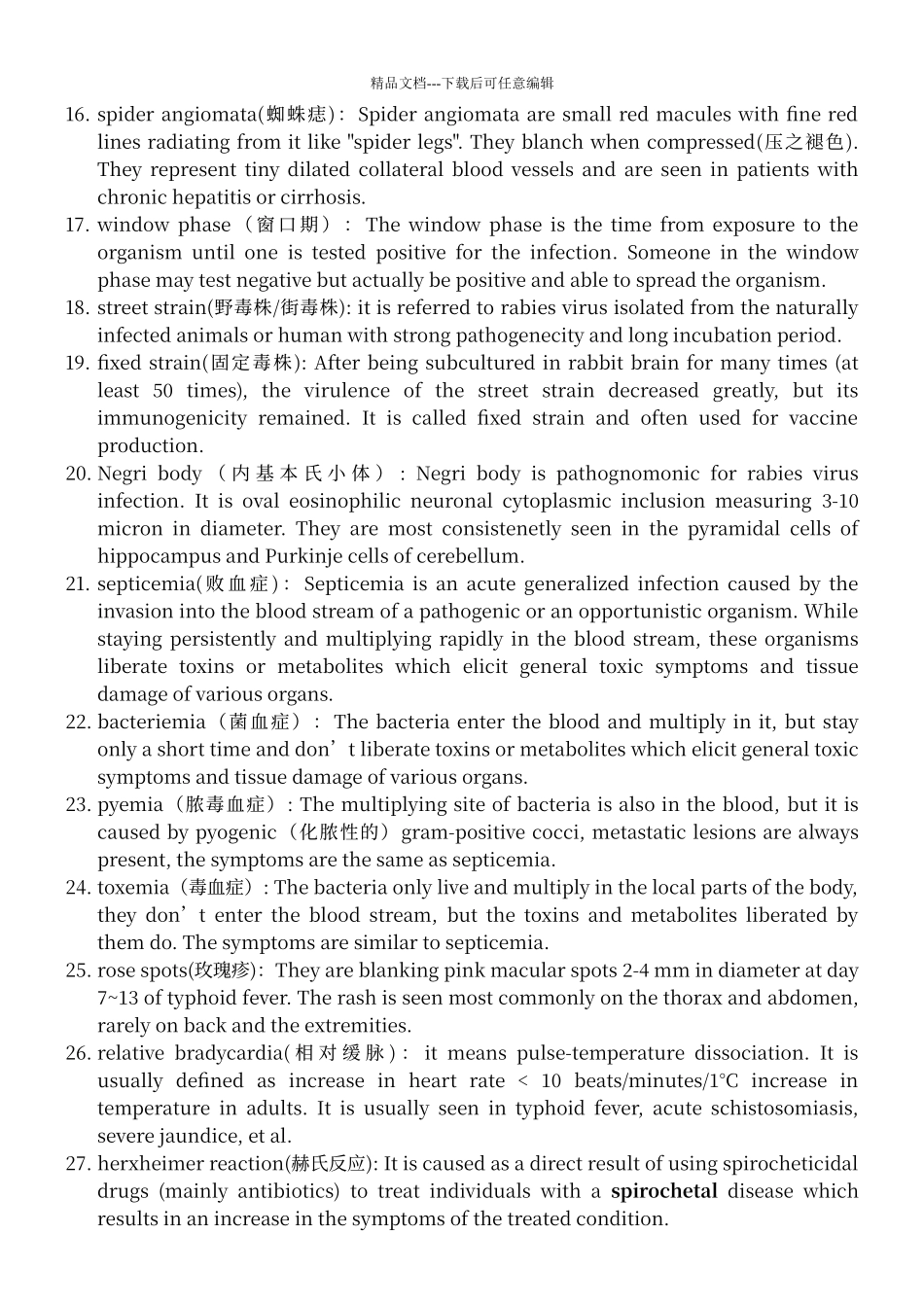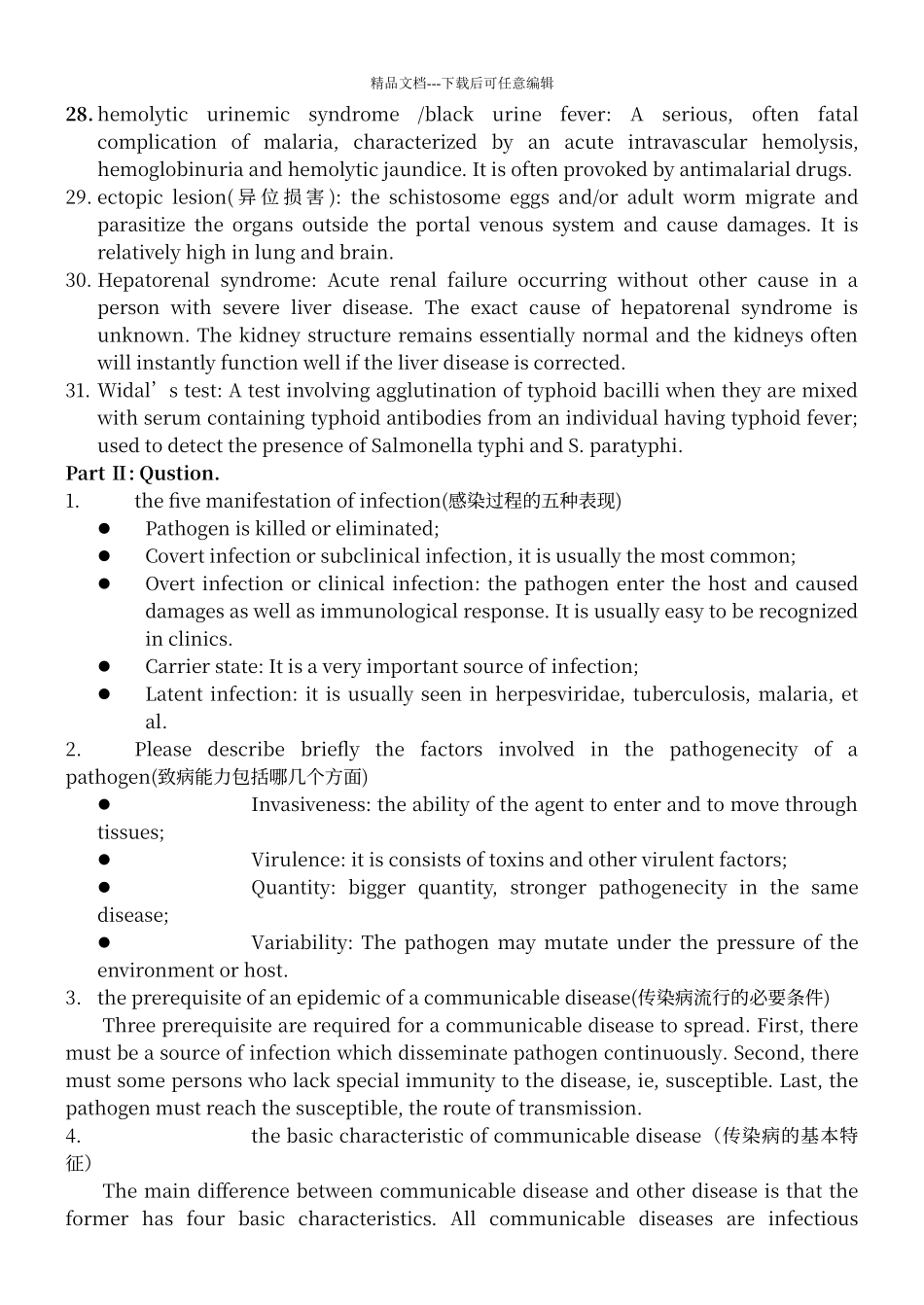精品文档---下载后可任意编辑Frequently asked question (in English)Part Ⅰ Noun explanation 1.convert infection/subclinical infection(隐性感染/亚临床感染):it means only a special immune response without or with very mild damage to the host after the agent entered which can be diagnosed by serologic means with demonstration of either a single high titer or a fourfold rise in titer to the infection. It is the most common model.2.carrier state(病原携带状态):it is a person who is colonized with an organism but shows no evidence of disease, although disease may have been present earlier. A carrier is a very important source of infection as the organisms can be disseminated from him.3.latent infection(埋伏性感染):it means an organism enters a host and lies dormant( 静 止 的 ) for a period of time, possibly for years, before producing disease as the host’s immunity decreased.4.invasiveness(侵袭力):the ability of the agent to enter and to move through tissue.5.source of infection( 传 染 源 ) : it is referred to a person or animal in which the pathogen stay and multiply and can be disseminated .6.route of transmission(传播途径): the route the pathogen entered another susceptible after been disseminated from the source of infection.7.susceptible( 易 感 者 ): it is referred to a person who lacks immunity to a specific infectious disease.8.relapse(复发):it means the return of symptoms after they have apparently ceased during convalescence which is caused by the multiplication of the pathogen in the host. It is often seen in typhoid fever, malaria, et al.9.recrudescence( 再 燃 ): it means the reappearance of symptoms after temporary cessation.10. sustained fever (稽留热): high fever, lasting and little change in 24...


